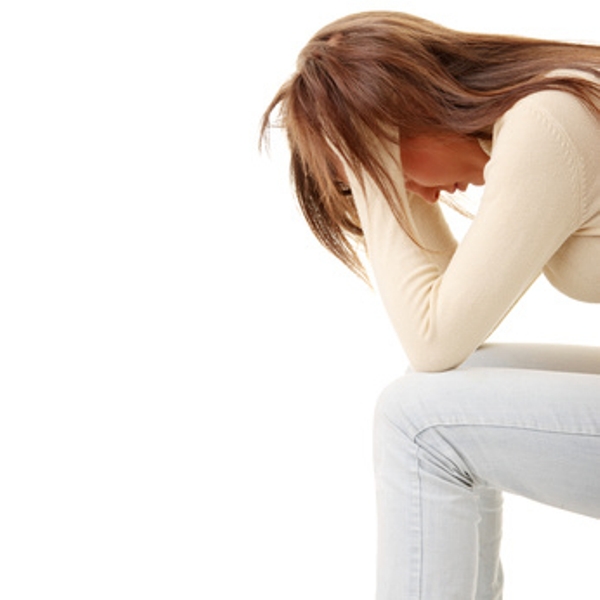
Menstrual cycle indicates the fertility of women that initiates at the age of 10-11 years and continues till 40-55 years of age. Women can bear child as long as her menstrual cycle continues. Menstruation is indicated by monthly discharge of blood due to the shedding of uterine lining or endometrium through the vagina. This discharge of blood commonly termed as menses or periods lasts for about 4-7 days. Fresh uterine lining is formed every month for the implantation of a fertilized egg. If the egg released from ovary remains unfertilized by the sperm, the uterine lining is discharged in the form of menses. In case the egg is fertilized by the sperm or the woman gets pregnant, menstrual flow does not occur, and this phase extends till the end of the term. Menstrual cycle recurs after the termination of pregnancy.
Time period of a menstrual cycle
Normally a menstrual cycle occurs within a period of 28-32 days, counting the days between two successive periods. The time period may vary with each individual, and a menstrual cycle of 26 and 35 days is also quite common. Girls start menstruating at the age of 10 – 11 and continue till they attain menopause at the age of 45-55 years. The first menstrual bleeding is termed as menarche and girls attain puberty stage with the onset of menstruation. Initial menstrual cycles can pose many physical problems as the body requires time to adjust to the hormonal changes along with the development of reproductive organs.
Different phases of the menstrual cycle
A menstrual cycle occurs in four different phases:
1. Menstruation
This is the first phase indicated by bleeding or shedding of the uterine lining that continues for 3-5 days. This period also varies with the physical constitution of a female. Blood cells and mucus are discharged during this period. Women experience heavy bleeding in the first two days, which starts receding from the third and fourth day. About 35 ml of blood is discharged on an average, but blood discharge less than 20ml and more than 70 ml are also considered normal. Women may become anemic from excessive blood loss.
2. Follicular Phase This phase starts from the first day of the menstruation cycle and continues till 10-14th day. Follicle Stimulating Hormone (FSH) secreted from the pituitary gland produces about 20 follicles in the ovary. Each follicle contains an egg which takes few days to mature. A single follicle survives out of 20, and the egg gets matured to be fertilized with the sperm. The uterine lining builds up creating favorable conditions for pregnancy.
3.Ovulation
In this phase, the egg is released from the ovary, which swims down the fallopian tube to get fertilized with the sperm. Ovulation can occur within 10-15th day of the menstrual cycle. Some women experience ovulation pain during this period. Ovulation period is considered as the most fertile phase of women as the chances of pregnancy are quite high. Estrogen levels remain high in the follicular phase. This signals the brain to release Gonadotrophin Releasing Hormone (GnRH), which again facilitates the release of Leutenizing Hormone (LH). Higher level of LH stimulates the release of the egg. The egg can survive only for 24 hours before it gets fertilized by the sperm.
4. Luteal Phase
The ruptured follicle in the ovary, after releasing the egg, turns into a mass called corpus luteum. This mass releases higher levels of progesterone hormone with small amount of estrogen creating favorable conditions for the implantation of the fertilized egg. This progesterone release continues even after the successful implantation of the egg in order to maintain the endometrial thickness. In case there is no fertilization and pregnancy does not occur, corpus luteum withers and there is a drop in progesterone level. This drop again facilitates the breakdown of the endometrium through menstrual bleeding.
Common symptoms of Menstruation
Every woman experiences pre-menstrual syndrome (PMS) before the onset of menstruation. A number of physical and emotional symptoms are attached to PMS as the body adjusts to the hormonal changes. Moderate pre menstrual symptoms do not require any medical attention, but women experiencing severe PMS should seek medical consultation.
Common physical symptom includes tenderness, swelling and pain in the breasts. Sleep disturbances, fatigue, low appetite, bloating and gastrointestinal problems are other symptoms of menstruation. Some women experience severe menstrual cramps during menstruation, enough to disrupt the normal lifestyle. This may indicate Dysmenorrhoea and require treatment. Heavy menstrual bleeding or Menorrhagia should not be ignored.
Lack of concentration and mood swings are some commonly observed emotional symptoms of menstruation
Tips to manage your menstruation
Use good quality sanitary pads or tampons to manage the bleeding. Change your pads regularly after every four hours especially in the first two days. Maintain proper hygiene. Wear proper fitting undergarments. Take sufficient rest and eat a healthy diet. Avoid spicy foods and caffeinated beverages. If you experience severe menstrual cramps, take pain killers as prescribed by your doctor. In case of abnormally heavy bleeding, consult your physician immediately. You may take iron supplements to prevent anemia.


